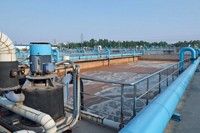Advertisement
Grab your lab coat. Let's get started
Welcome!
Welcome!
Create an account below to get 6 C&EN articles per month, receive newsletters and more - all free.
It seems this is your first time logging in online. Please enter the following information to continue.
As an ACS member you automatically get access to this site. All we need is few more details to create your reading experience.
Not you? Sign in with a different account.
Not you? Sign in with a different account.
ERROR 1
ERROR 1
ERROR 2
ERROR 2
ERROR 2
ERROR 2
ERROR 2
Password and Confirm password must match.
If you have an ACS member number, please enter it here so we can link this account to your membership. (optional)
ERROR 2
ACS values your privacy. By submitting your information, you are gaining access to C&EN and subscribing to our weekly newsletter. We use the information you provide to make your reading experience better, and we will never sell your data to third party members.
Infectious disease
Covid-19
Novel coronavirus found in surprisingly high levels in sewage
Viral levels higher than expected based on confirmed COVID-19 cases
by Celia Henry Arnaud
April 16, 2020
| A version of this story appeared in
Volume 98, Issue 15

Because SARS-CoV-2, the novel coronavirus that causes COVID-19, has been found in the feces of confirmed COVID-19 patients, wastewater-based epidemiology might be an effective way to track the extent of the disease in a population.
Wastewater epidemiology is most commonly used to monitor drug usage in a community. It can also provide information about the spread of infection when individual tests are limited. A team led by Eric J. Alm of the Massachusetts Institute of Technology and Biobot Analytics has now used quantitative reverse transcription polymerase chain reaction (RT-PCR) to measure SARS-CoV-2 in sewage from a wastewater treatment facility in Massachusetts. The researchers published their findings on the preprint server medRxiv, so the study has not yet been peer reviewed (medRxiv 2020, DOI: 10.1101/2020.04.05.20051540).
Support nonprofit science journalism
C&EN has made this story and all of its coverage of the coronavirus epidemic freely available during the outbreak to keep the public informed. To support us:
Donate Join Subscribe
The Biobot team analyzed four samples taken before the first known US case of COVID-19, and all tested negative for the virus. All 10 samples taken between March 18 and March 25 tested positive for SARS-CoV-2, at levels higher than the researchers expected based on the number of confirmed cases. They used direct DNA sequencing to verify that the RT-PCR products were actually from SARS-CoV-2. But more information is needed, such as the amount of virus in stool from positive patients over the course of the disease, to fully interpret the findings.
Wastewater analysis “could be used to establish whether COVID-19 has infected a community and monitor for when the community is relatively free of COVID-19,” says Kevin Thomas, an epidemiologist at the University of Queensland. The approach should be used in combination with individual testing, he says.
Biobot is now getting weekly samples from more than 100 treatment plants around the US, according to Mariana Matus, Biobot’s CEO.
UPDATE
This story was updated on April 20, 2020, to clarify that the results presented were published on a preprint server and therefore not yet peer reviewed.





Join the conversation
Contact the reporter
Submit a Letter to the Editor for publication
Engage with us on Twitter